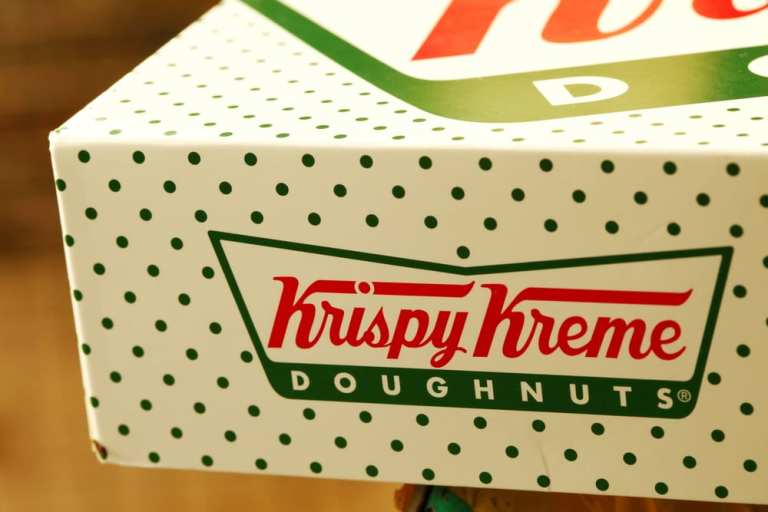
The all-important last mile of retail is getting shorter and more innovative. As reported by PYMNTS on Monday (Feb. 24), Krispy Kreme is the latest brand to announce home delivery capabilities. It plans to roll out nationwide delivery on Feb. 29 via DoorDash, the on-demand delivery platform. The brand will send boxed coffee as well as doughnuts by the dozen. For most shops, a delivery fee of $4.99 will apply, USA Today reported.
Krispy Kreme first began testing online ordering and delivery in 2018, and will now roll out the program nationally. The company is creating an event around the launch, which enables it to join home delivery services from brands like CVS, Starbucks, McDonald’s, Walmart and Dunkin’. Doughnuts will be delivered to dozens of hospitals on Feb. 29, celebrating Leap Day babies, their parents and the professionals who care for them.
The move is significant in the context of mobile and online ordering for QSRs as well as full-service restaurants. With mobile and online ordering emerging as table stakes, the delivery aspect is becoming an important part of the customer experience as well as the bottom line of the companies in this space. According to research from TouchBistro, home delivery has created a new revenue stream for full-service restaurants, gaining on average an 11 to 20 percent increase in overall sales volume. It has also increased the average check size. Customers spend up to 20 percent more on online orders than offline visits.
Home delivery is also becoming common in the retail space. The same report shows that half of retailers currently offer same-day delivery, and 65 percent plan to offer it within two years. Almost half of all shoppers are more likely to shop online if they know the product will be delivered on the same day. Sixty-one percent of consumers are willing to pay more for same-day delivery. On the flip side, 25 percent of shoppers would abandon a cart without same-day delivery.
Revenue and customer satisfaction aside, home delivery is also emerging as a high-touch option in a digital world. According to a report from location-based provider Glympse, home delivery is an essential source of customer feedback.
“In days gone by, customers were perfectly okay with going to a website and searching for contact information, or waiting a couple of days after receiving their purchase to get a feedback request from the company,” its report states. “The landscape of customer feedback has changed dramatically in the last several years, as buyers now expect to have instant options to provide feedback during and after the delivery on their mobile device.”
The Glympse report hints at the decision any retailer that wants to play in the home delivery space will have to make: Who delivers? With any number of delivery services competing for business, including DoorDash, Seamless and Uber Eats, McKinsey research says it’s a critical decision. Once a consumer signs up for one of these platforms, they typically don’t leave.
“New delivery platforms, which personalize the ordering experience by storing relevant customer data, are sticky,” it says. “Once customers sign up, 80 percent never or rarely leave for another platform, creating a strong ‘winner-take-all’ dynamic, in which the reward goes to the player who can sign up the most customers in the shortest amount of time.”
According to PYMNTS’ Mobile Order-Ahead Tracker®, Starbucks is one QSR making headway in the mobile ordering scene, with a recent earnings call revealing that digital orders accounted for a full 17 percent of its revenue during Q1 2020. The Starbucks app also hit 18.9 million active users and is particularly popular in China, where mobile orders comprised another 15 percent of the chain’s revenue. Starbucks’ total revenue for the quarter was $7.1 billion, generated by its 31,795 store locations.
Mobile ordering is also spreading to new arenas, such as grocery stores. Grocery delivery app Instacart recently partnered with supermarket chain Publix to allow customers to order from the latter’s deli counter via mobile app, although currently, this option is only available for premade foods and not meats or cheeses. The partnership was first launched at Publix’s Orlando, Florida-based stores, with plans to expand to the chain’s other locations over the next few months.
Restaurants of all sizes and verticals must embrace home delivery to be viable competitors. If they’re going to have mobile and online ordering, they need to get it while it’s hot.